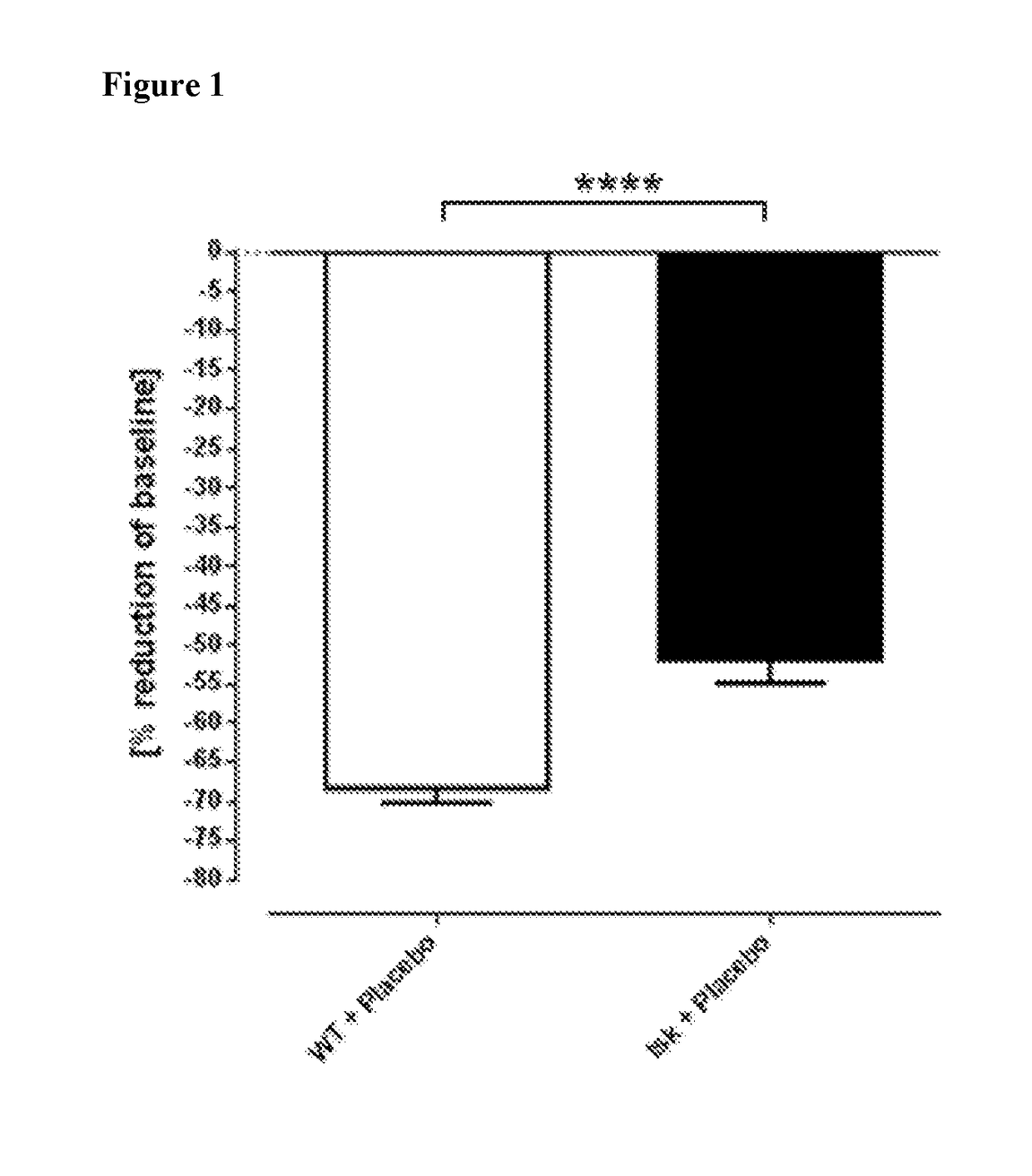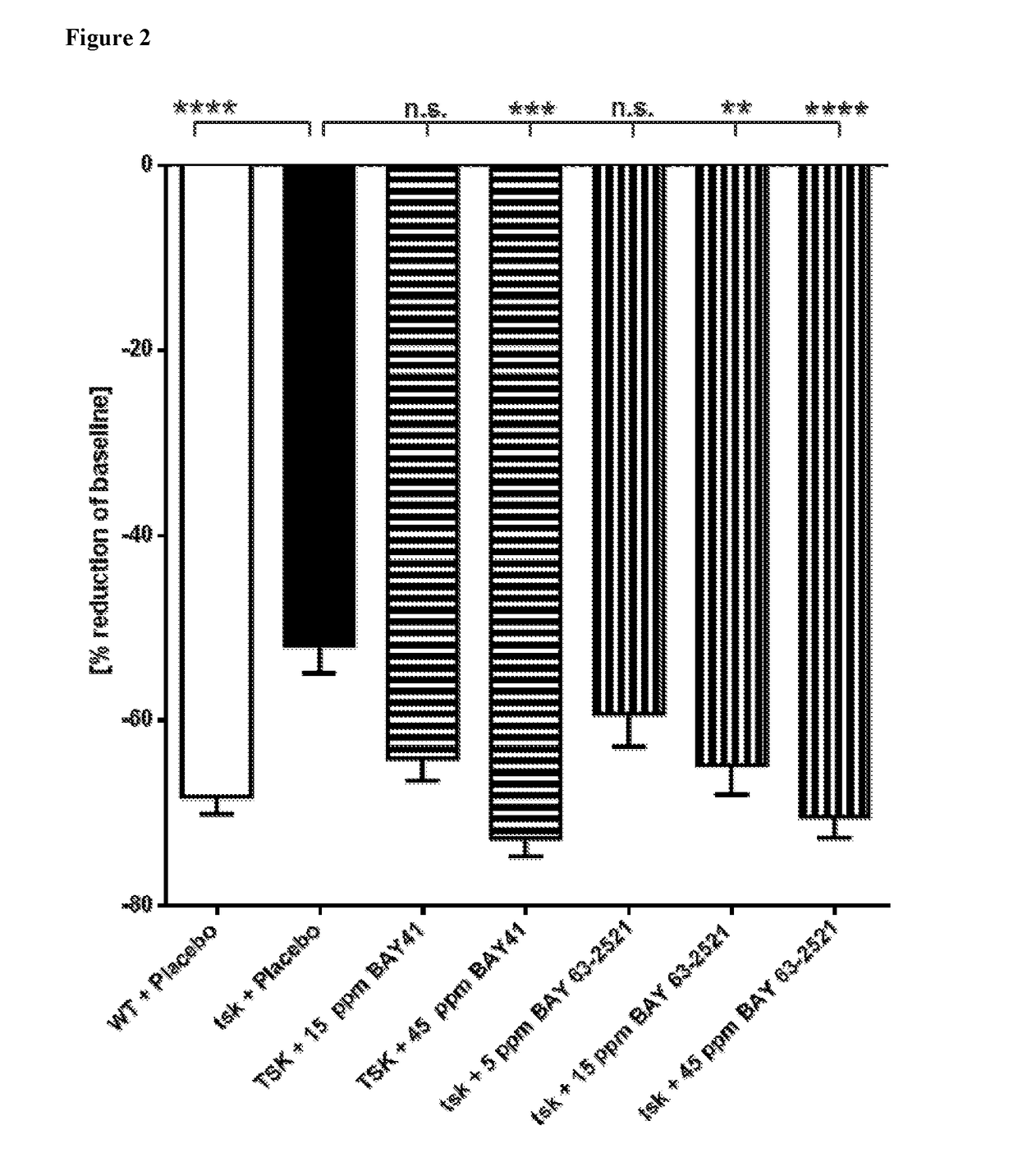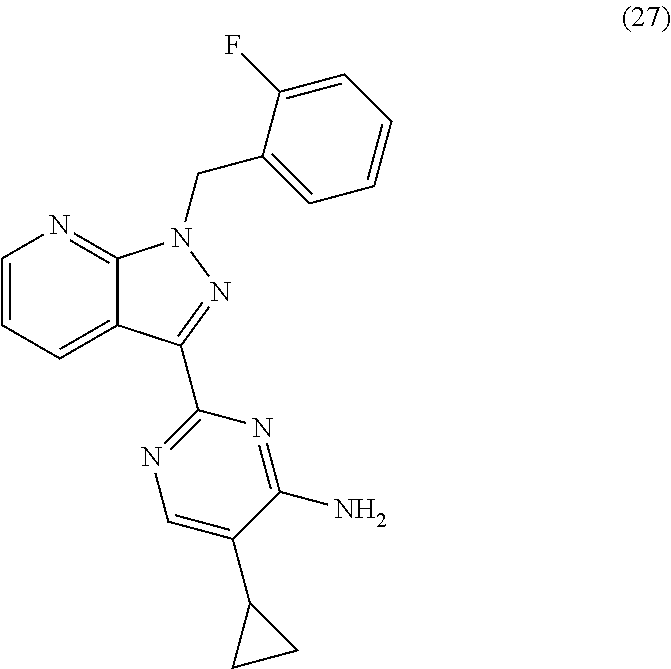The use of sgc stimulators, sgc activators, alone and combinations with pde5 inhibitors for the treatment of digital ulcers (DU) concomitant to systemic sclerosis (SSC)
a technology of sgc stimulators and activators, which is applied in the field of sgc stimulators and sgc activators, can solve the problems of reducing the quality of life of ssc patients, affecting hand function, and high morbidity and mortality, and achieves effective urological treatment options, reduce skin fibrosis, and increase cgmp.
- Summary
- Abstract
- Description
- Claims
- Application Information
AI Technical Summary
Benefits of technology
Problems solved by technology
Method used
Image
Examples
example a
Wound Healing in Tsk-1 Mice Versus WT-Mice
[0089]The tight-skin (Tsk-1) mouse model of SSc was used to evaluate the effects of compound according to formula (27) and (3) (BAY 41-2272 and BAY 63-2521) on wound healing in mice with substantial skin fibrosis. Due to an autosomal dominant mutation namely a tandem duplication of the fibrillin-1 gene, the phenotype of tsk-1 mice is characterized by an increased hypodermal thickness (Beyer et al. 2010). Genotyping of Tsk-1 mice was performed by PCR with the following primers: mutated fibrillin-1 / tsk-1 forward primer: 5′-GTTGGCAACTATACCTGCAT-3′, reverse primer: 5′-CCTTTCCTGGTAACATAGGA-3′.
[0090]The effects of placebo (=vehicle for the test compounds=0.5 tylose solution) was studied in either WT mice or in Tsk-1 mice. Tsk-1 mice were anaesthetized and carefully shaved 3 days before setting the wounds for exact quantification of the wound size. In order to avoid influences on wound healing by daily handling of the animals, the usual bi-daily ga...
PUM
| Property | Measurement | Unit |
|---|---|---|
| diameter | aaaaa | aaaaa |
| healing time | aaaaa | aaaaa |
| soluble | aaaaa | aaaaa |
Abstract
Description
Claims
Application Information
 Login to View More
Login to View More - R&D
- Intellectual Property
- Life Sciences
- Materials
- Tech Scout
- Unparalleled Data Quality
- Higher Quality Content
- 60% Fewer Hallucinations
Browse by: Latest US Patents, China's latest patents, Technical Efficacy Thesaurus, Application Domain, Technology Topic, Popular Technical Reports.
© 2025 PatSnap. All rights reserved.Legal|Privacy policy|Modern Slavery Act Transparency Statement|Sitemap|About US| Contact US: help@patsnap.com



